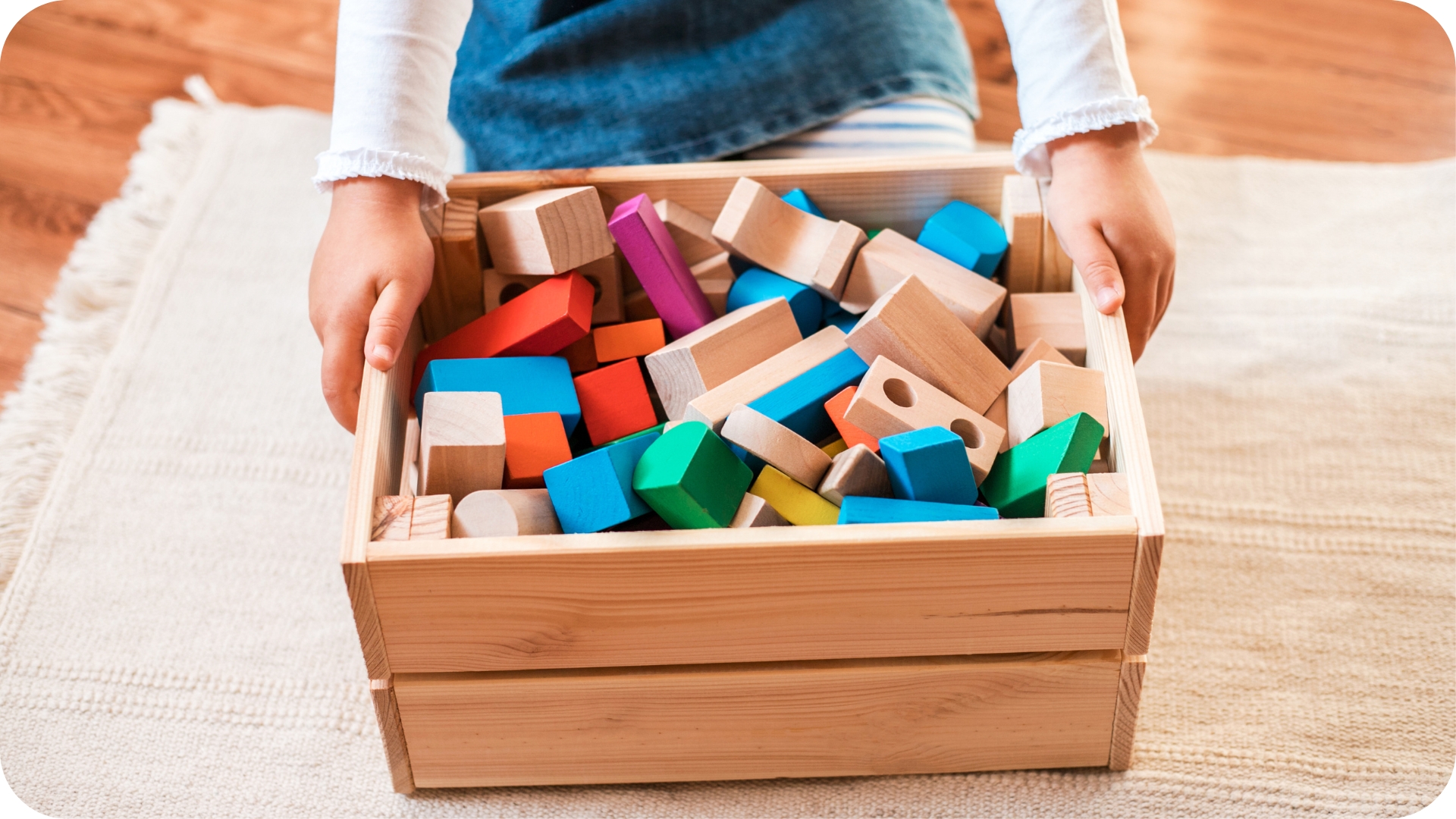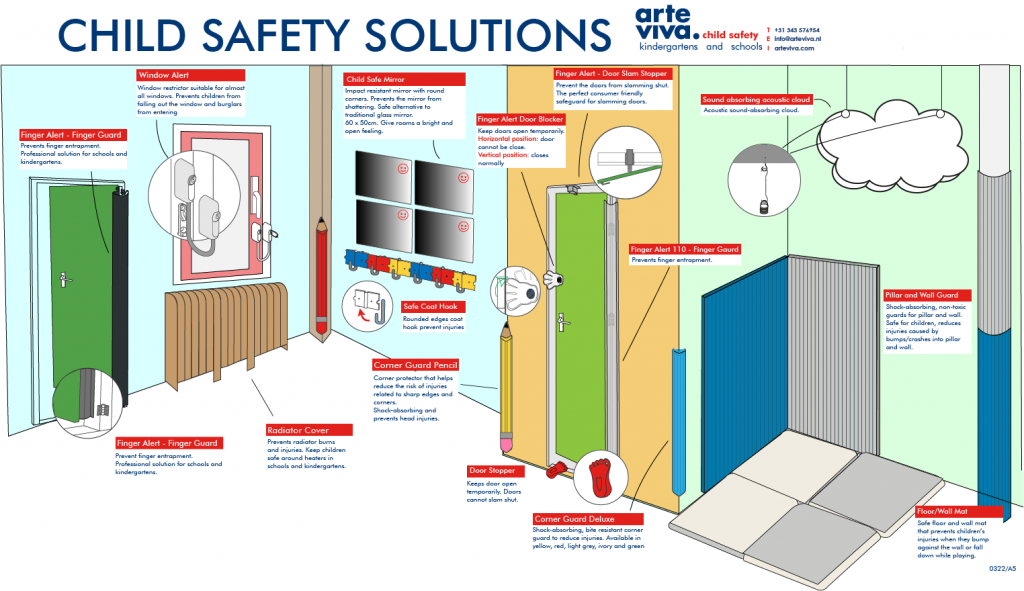6 Ways to Promote Classroom Safety
 “Does my child’s preschool or nursery make sure child safety is a top priority in the classroom?”
“Does my child’s preschool or nursery make sure child safety is a top priority in the classroom?”
When dropping their child off at school, every parent wants to leave knowing that their child is safe. It is every parent’s worst nightmare to get that dreaded phone call telling them their child was just hurt. Thankfully, in this day and age, preschools and daycare centers are taking extra measures to ensure each child remains safe and unharmed while at school.
It can be easy for classroom safety to slip teachers’ minds amid lesson plans and field trips, but it’s definitely not something to be ignored! A well-organized classroom that has safety procedures in place not only makes students feel more secure, but it also shows parents their children are being well cared for.
If you’re a preschool teacher/president/owner looking for ways to implement classroom safety, keep reading to learn some tried and true tactics for preschool classroom safety.
6 preschool classroom safety tips
1. Child Safety means keeping dangerous supplies out of reach
Scissors, bulletin board tacks, glue – all things that shouldn’t be easily accessible for preschool-aged kids. Make sure to keep any sharp objects, choking hazards, poisonous materials and other potentially hazardous supplies on a high shelf or locked away in a cupboard.
The last thing you want is a student standing on their tippy-toes to reach a bin of sharp items on a just-out-of-reach ledge. When supplies like these are taken out and available during craft time, it’s important to talk with your students about how to properly use these tools.
“Be sure to take the time to review safety procedures with the children before adding an open shelf in the art area,” says Mary Muhs, dean of the Rasmussen School of Education. “Then when children are using the materials, be sure to keep an eye open to help with safety if needed.”
2. Design the room properly
Classroom arrangement plays a large part in classroom safety. Are classrooms open and uncluttered, with nothing to inhibit safe traffic flow?
Large pieces of furniture and sharp corners increase the chances of bumps and bruises. The classroom should be set up in a way where children can move about easily without obstacles.
In addition to that, both toys and furniture should be in good condition. Furniture in disrepair or broken toys with jagged edges have the potential to cause harm. If something is broken or not working properly it should be repaired or replaced.
There should be no blind spots or areas where children can easily hide in the classroom. This will allow the teacher and teacher’s aides to keep an eye on the children and provide constant supervision.
3. Keep the classroom clean
If you put a bunch of children in a classroom together there are bound to be germs and common childhood illnesses shared but with proper standards of cleanliness followed, these too can be kept to a minimum.
Children touch everything. Toys, classroom furniture and any other classroom facilities should be cleaned and disinfected regularly. This can significantly reduce the spread of germs.
Children can play an active part in classroom cleanliness by washing their hands frequently. They can also alert the teacher or aides to any spills, so they may be cleaned up promptly. This can help avoid slips and falls.
Also, make sure there are first aid kits available and properly stocked. The entire staff should have completed First Aid Training and be CPR Certified.
While these are just a brief overview of some of the things to look for when choosing a preschool, be sure that strong policies and procedures that ensure your child’s health and safety are in place and adhered to consistently. Classroom safety and cleanliness should be a top priority.
4. Practice emergency plans
Emergency plans don’t do much good if your preschoolers don’t know the drill. Walk kids through the experience before your school’s first fire drill to prevent any crying or frightened sobs. Role play the whole event, from alarm to the moment when it’s safe to come back inside. Then when that first fire drill rings, your students won’t be alarmed.
Do the same thing with lockdown drills, tornado drills and other emergency safety plans. This will help children—and their parents for that matter—understand that their school and teacher takes safety seriously.
5. Classroom Supervision
Children are easily distracted and something outside the classroom may attract their attention.
Rules about not leaving the classroom without permission should be in place and strictly enforced. Children should leave the classroom only in the company of the teacher, a staff member or a parent.
While it may seem a bit excessive, taking frequent head counts is a great way to increase the efficiency of classroom supervision. Making counting the children a group activity will reinforce the importance of everyone being present and working together.
Continual supervision allows the teacher and aides to know where all the children are and what they are doing. This can be beneficial in anticipating any trouble and enable them to step in to prevent any physical conflict.
6. Keep communication flowing
Keep an open line of communication between yourself and your students’ parents, as well as between yourself and your students. Your classroom is a community. Open communication will help you all work together to keep students safe.
Additionally, keep everyone up to date on new guidelines, what’s happening on field trips, your classroom policies and other emergency information. Become familiar with your students’ immediate families so you can quickly spot a suspicious person versus a parent stopping by for lunch with their child. Keep your fellow teachers and superiors updated as well so any situations that arise can be taken care of promptly and efficiently.
Questions?
We hope that these tips will make schools and kindergartens safer for your children!
Arte Viva offers child safety solutions for kindergartens and schools, like door finger guards, corner protection, radiator cover, and window protection. Explore our range and feel free to contact us contact us for more information or request a quote.
We are happy to help you choose the right solution!
As child safety ambassadors, the Arte Viva team has developed an example of a safe classroom for children. Check out the picture below or click on the picture to download PDF for a better experience:
Products that were included in the picture:
- Door finger guards
- Radiator Cover
- Door Stoppers
- Corner Guards
- Wall & Pillar Protection
- Acoustic Cloud
- Anti-slip Steps
- Window Alert
- Child Safe Mirrors



